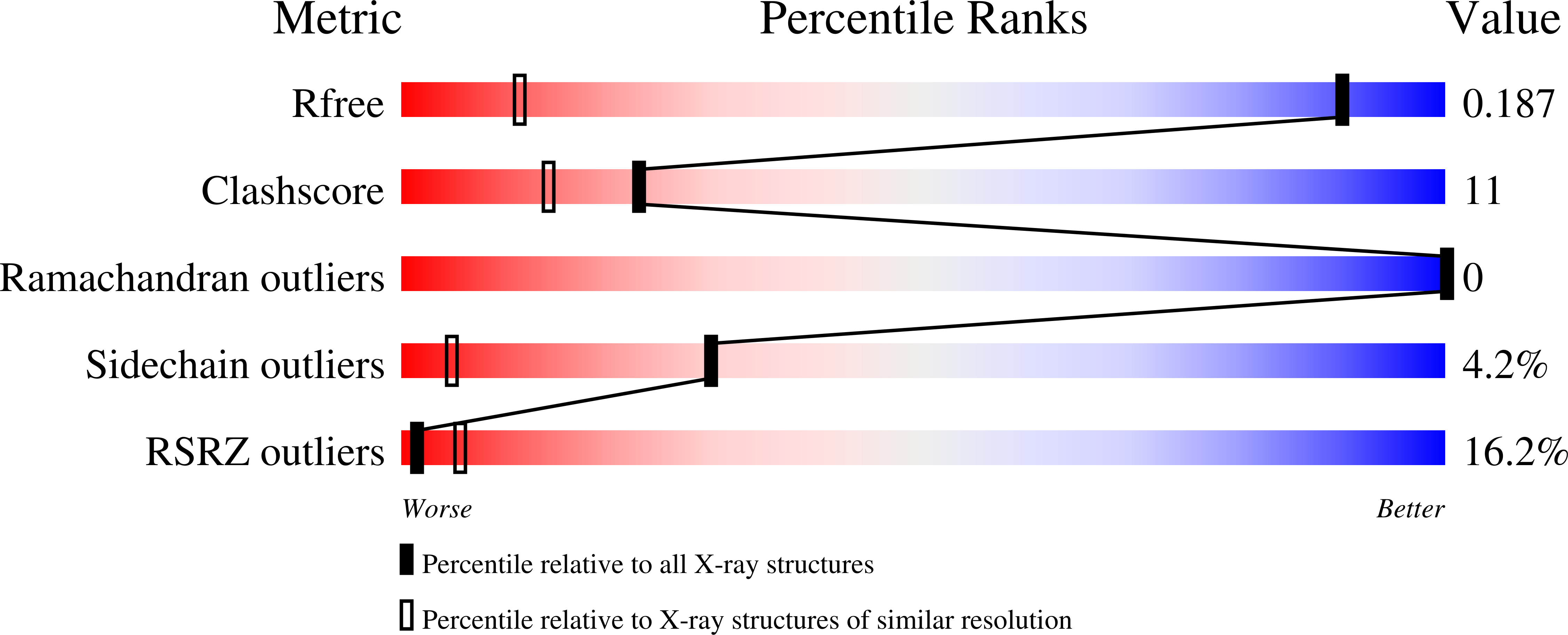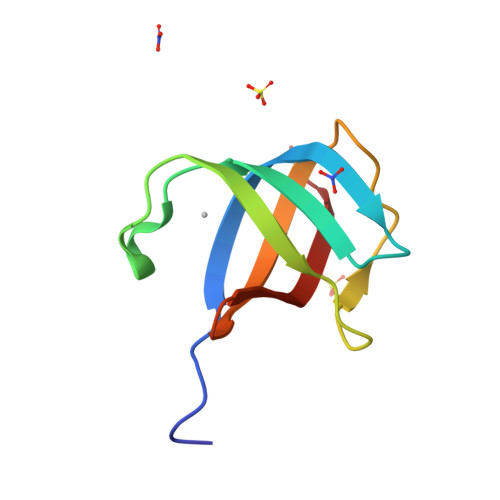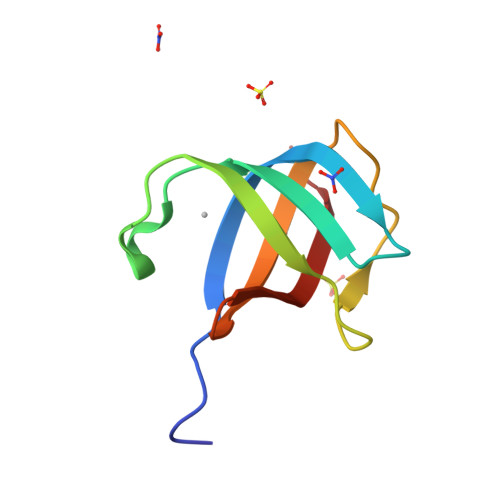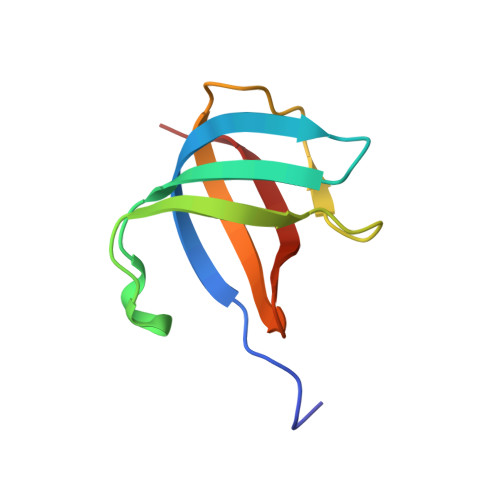Unusual Cu(I)/Ag(I) coordination of Escherichia coli CusF as revealed by atomic resolution crystallography and X-ray absorption spectroscopy
Loftin, I.R., Franke, S., Blackburn, N.J., McEvoy, M.M.(2007) Protein Sci 16: 2287-2293
- PubMed: 17893365
- DOI: https://doi.org/10.1110/ps.073021307
- Primary Citation of Related Structures:
2QCP - PubMed Abstract:
Elevated levels of copper or silver ions in the environment are an immediate threat to many organisms. Escherichia coli is able to resist the toxic effects of these ions through strictly limiting intracellular levels of Cu(I) and Ag(I). The CusCFBA system is one system in E. coli responsible for copper/silver tolerance. A key component of this system is the periplasmic copper/silver-binding protein, CusF. Here the X-ray structure and XAS data on the CusF-Ag(I) and CusF-Cu(I) complexes, respectively, are reported. In the CusF-Ag(I) structure, Ag(I) is coordinated by two methionines and a histidine, with a nearby tryptophan capping the metal site. EXAFS measurements on the CusF-Cu(I) complex show a similar environment for Cu(I). The arrangement of ligands effectively sequesters the metal from its periplasmic environment and thus may play a role in protecting the cell from the toxic ion.
Organizational Affiliation:
Department of Biochemistry and Molecular Biophysics, University of Arizona, Tucson, Arizona 85721, USA.



















